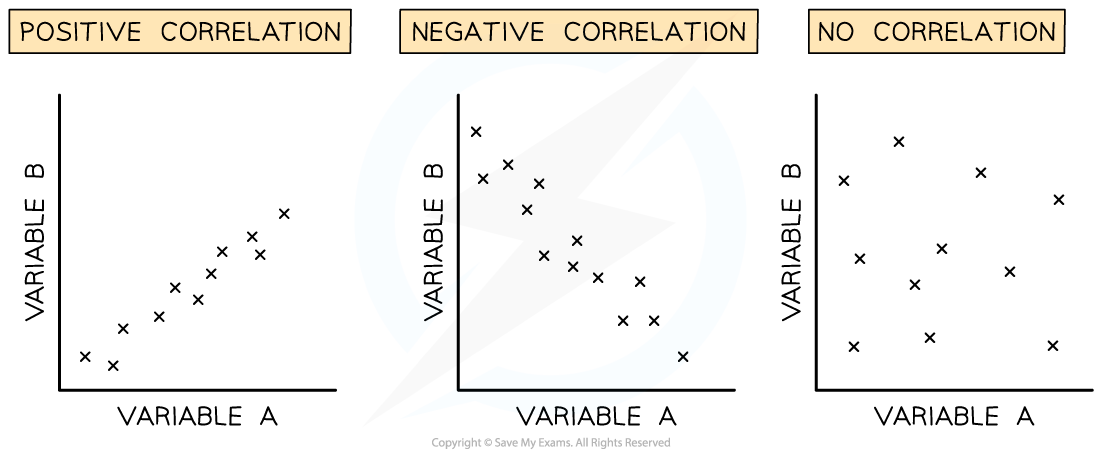Correlations & Causal Relationships - The Heart (AQA A Level Biology) : Revision Note
Correlations & Causal Relationships - The Heart
Correlation is an association or relationship between variables
Causation occurs when one variable has an influence or is influenced by, another
There is a clear distinction between correlation and causation: a correlation does not necessarily imply a causative relationship
Recognising Correlations and Causal Relationships
Scientists present their findings from experiments in graphical and numerical forms to identify if there are relationships between risk factors and certain disease
Scatter diagrams are used to identify correlations between two variables to determine if a factor (such as obesity) does increase the risk of developing a disease (such as type 2 diabetes)
Correlation can be positive or negative
Positive correlation: as variable A increases, variable B increases
Negative correlation: as variable A increases, variable B decreases
If there is no correlation between variables the correlation coefficient will be 0

Image showing different types of correlation in scatter graphs
Risk factors & causal relationships for coronary heart diseases
Coronary heart disease (CHD) includes any condition that interferes with the coronary arteries which supply blood to the heart muscle
Many factors can increase the risk of developing CHD. Some factors are controllable while some factors can not be controlled
The main risk factors for CHD include:
Genetic factors, age and sex, high blood pressure, smoking, obesity and high concentrations of low-density lipoproteins (LDLs)
All of the risk factors for CHD can interact and affect one another
The causal relationship for some risk factors can be very clear
A diet high in LDLs will cause the lumens of blood vessels to narrow and the increase the likelihood of an atheroma developing in the coronary arteries
The interaction between risk factors in studies and investigations can make it hard to determine some causal relationships
For example, it would seem illogical that an overweight smoker would not suffer from CHD but that overweight, non-smoker would
The latter individual could have a strong genetic predisposition to CHD (that wasn’t picked up in the study) which when combined with high blood pressure from being overweight results in CHD
Therefore, it is very important when evaluating data on risk factors that you state that a factor increases or descreases the risk or that there is a correlation between a factor and an outcome but that this one factor is not necessarily the (only) cause

You've read 0 of your 5 free revision notes this week
Unlock more, it's free!
Did this page help you?

